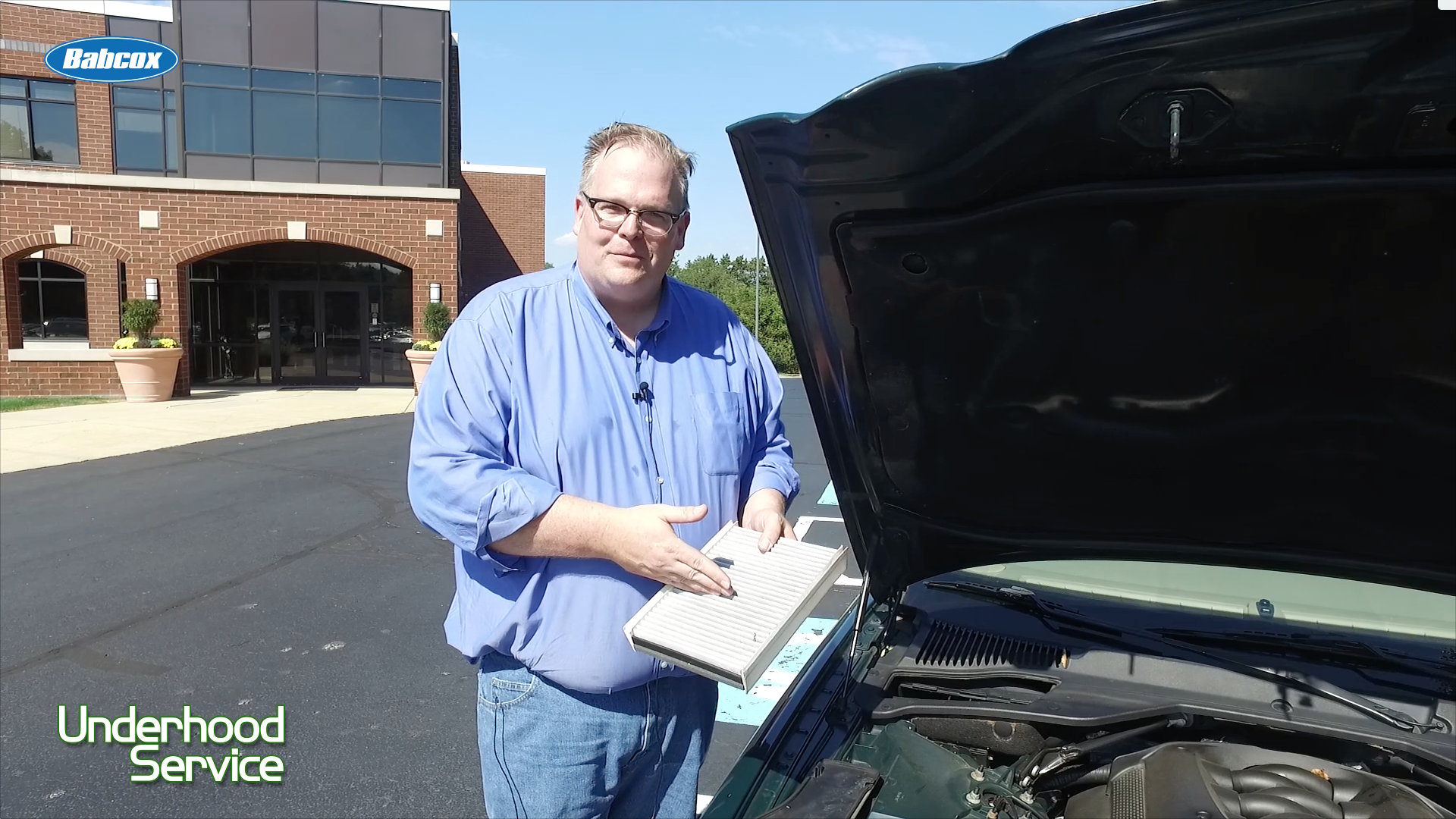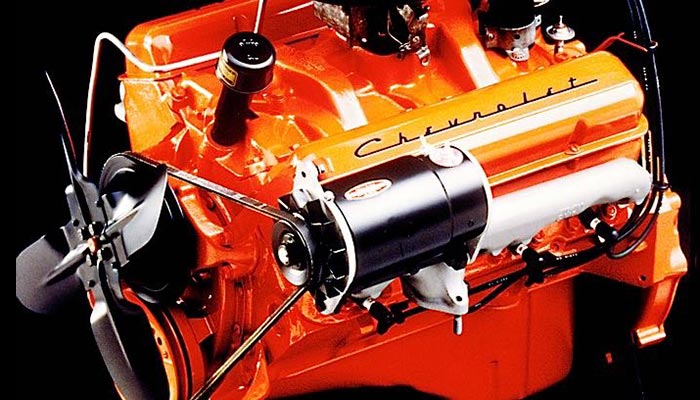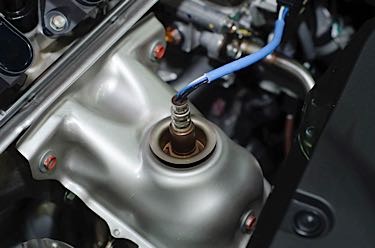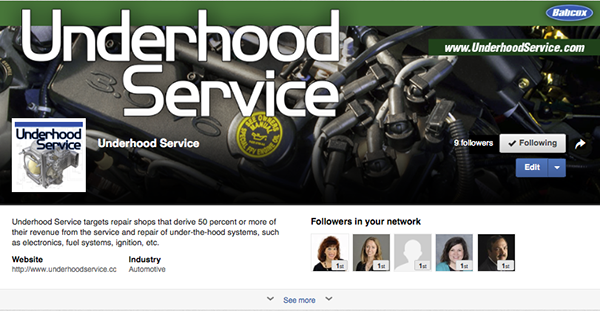A brake lathe has long been an indispensable piece of equipment for shops that do brake work. A bench lathe is necessary to resurface rotors and drums. An on-car lathe is also a great tool for turning troublesome rotors on vehicles that are sensitive to rotor runout issues, and those with captured rotors. But with cheap offshore rotors flooding the aftermarket, and some new cars now being equipped with lightweight rotors that are too thin to turn, you may be questioning the need for a brake lathe.
The fact is, brake lathes (both bench lathes and on-car lathes) are still as necessary as they have ever been. Most shops that do a lot of brake work want the ability to resurface their own rotors. They don’t want to send rotors out for resurfacing because it takes too long, and they don’t want to risk comebacks because of runout or finish issues. Having the ability to cut their own rotors and drums puts them in the driver’s seat so-to-speak as far as quality control and time are concerned.
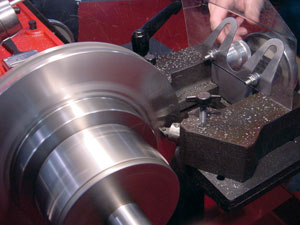 As for replacing rotors versus resurfacing rotors, why replace a perfectly good rotor that has enough metal left in it for another 50,000 to 60,000 miles? Better to resurface the rotors, earn some extra labor profit while also saving your customer the cost of new rotors. A resurfaced OEM rotor or quality aftermarket rotor will also brake better and last longer than some of the cheap rotors that are being sold in the aftermarket these days.
As for replacing rotors versus resurfacing rotors, why replace a perfectly good rotor that has enough metal left in it for another 50,000 to 60,000 miles? Better to resurface the rotors, earn some extra labor profit while also saving your customer the cost of new rotors. A resurfaced OEM rotor or quality aftermarket rotor will also brake better and last longer than some of the cheap rotors that are being sold in the aftermarket these days.
Shopping for a Brake Lathe
Most shops still need a combination lathe that can do both rotors and drums. Many cars now have four-wheel disc brakes (both domestic and import), but many still have drums in the rear, including trucks and SUVs. Consequently, you need the ability to turn drums as well as rotors.
A lathe that can handle anything from a small compact car rotor up to a large truck rotor or drum (or even a flywheel) will give you the most versatility. Most shops need the flexibility to work on any make or model that comes in for brake service. Most bench lathes have a standard 1” arbor that can be used with various mounting adapters to handle a wide range of rotor sizes and styles. Some lathes have larger diameter arbors to provide extra rigidity and the ability to handle larger, heavier rotors or flywheels (up to 100 lbs. in some cases!).
If a single bench lathe becomes a bottleneck in a busy shop, you can always add a second lathe to keep the work flowing. A rotor-only lathe makes a good addition as a second lathe because the front brakes are serviced much more frequently than the rear brakes. Because of this, you’ll be turning far more rotors than drums.
If you’re looking to replace or upgrade an old bench lathe, consider a new one that has a digital readout for measuring drum and rotor dimensions. Digital readouts are much easier to read than a micrometer and can help reduce operator errors. Some of these machines also offer automated resurfacing. After you mount the rotor, and make a runout adjustment and push a couple of buttons, the machine does the rest.
Some new lathes have “Anti Chatter Technology” that oscillates the machining speed of the lathe to eliminate the buildup of vibration (chatter) that can occur when machining at a fixed speed.
Bench lathes are available with single and variable speeds. Variable speed allows you to choose the correct rotational speed according to the diameter of the disc or drum. A variable feed speed allows you to choose a feed rate that will provide the best surface finish for the rotational speed chosen. A lathe with a fixed or variable rotational speed can provide the same results, but the variable speed models give you more control.
Some lathe manufacturers tout their ability to cut rotors fast — in less than a minute. Faster is better if you are trying to save time and increase productivity. But faster is only better if you can also maintain the quality of the rotor finish. This requires controlling the feedrate and making sure the lathe tool bits are sharp. If you attempt to cut rotors too quickly or don’t change or rotate the bits often enough, you won’t get a satisfactory finish on the rotors.
Sanding rotors after they have been turned with an abrasive brush or sandpaper can help improve the finish and reduce the risk of brake noise when the rotors are installed. But sanding can’t totally compensate for poor resurfacing techniques. Resurface the rotors correctly and you shouldn’t have to sand them afterwards.
Some lathes use a gear box to drive the arbor spindle while others use belts. Gear boxes are stronger, but require periodic maintenance, while belts are smoother and quieter.
Also important with bench lathes are the arbor mounting cones and adapters. Spend the extra bucks for a set of precision adapters. Special adapters are also needed for cutting composite rotors to keep the rotors from flexing and chattering. Noise dampening straps are also a must for a chatter-free finish.
On-Car Lathes
An on-car lathe has also become a necessity in many cases because of changes in rotor and suspension design. On-car lathes are considered an “essential tool” that many auto makers require their new car dealers to have for handling warranty work as well as general brake service. General Motors, Ford, Nissan, Subaru and others all require their dealers to have on-car lathes. Most of the other vehicle manufacturers also approve of on-car lathes being used for minimizing rotor runout.
One company who makes on-car lathes said they’ve sold more than 40,000 on-car lathes to date. That’s a lot of on-car lathes.
Many shops that have a bench lathe also own an on-car lathe. Why? Because an on-car lathe greatly reduces rotor runout, which in turn reduces the risk of pedal pulsation, uneven wear and brake job comebacks.
Runout occurs when a brake rotor is not perfectly perpendicular to the spindle. All rotors have some runout as a result of tolerance stackup between the spindle, wheel bearings and hub. The alignment of the spindle with respect to the knuckle, the amount of loading, play and wear in the wheel bearings, and the geometry of the machined surfaces of the rotor itself can all influence how much the rotor wobbles as it turns. A little wobble is tolerable (0.002” or less is best), but too much wobble can cause a pedal pulsation and promote uneven wear that leads to variations in rotor thickness and parallelism problems.
Runout can be effectively controlled with a conventional bench lathe — if you’re willing to spend the time to make the preliminary dial indicator runout checks on the vehicle, to duplicate the runout on the lathe when you mount the rotor, and to recheck it once again when the rotor is reinstalled on the vehicle. Most technicians aren’t willing to go to this much effort, and most times it isn’t even necessary. But when you have a runout problem, an on-car lathe is the fastest and easiest way to deal with it.
On-car lathes may mount to the hub or caliper. The latest hub-mounted lathes have computerized controls that automatically compensate for any runout before making a perfect cut. With caliper mounted on-car lathes, there must be no play in the wheel bearings.
An on-car lathe can be a real time saver on vehicles that have difficult-to-remove “captured” rotors. Though it takes some time to mount and set up the on-car lathe, it’s still far less time and trouble than tearing the knuckle apart to extract a captured rotor.
Return On Investment
Regardless of what type of brake lathe you purchase, your return on investment will depend on how many rotors/drums you resurface per week times your profit margin on each job. In a high volume shop, a new brake lathe can pay for itself very quickly and become a real profit center.
Most bench lathes are quite rugged and will provide years of trouble-free service, but a certain amount of care and maintenance is required to assure accurate cuts. The machine needs to be kept clean so metallic debris doesn’t interfere with the mounting adapters or the crossfeed mechanism. Arbor runout should also be checked periodically to make sure shaft bearing wear is not adversely affecting the accuracy of the cut.









